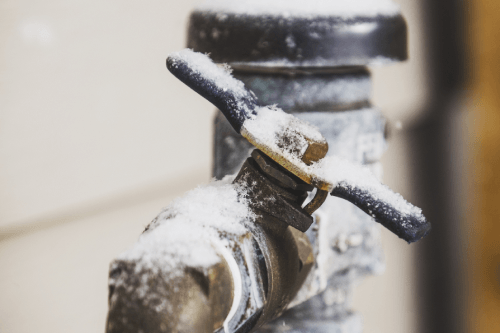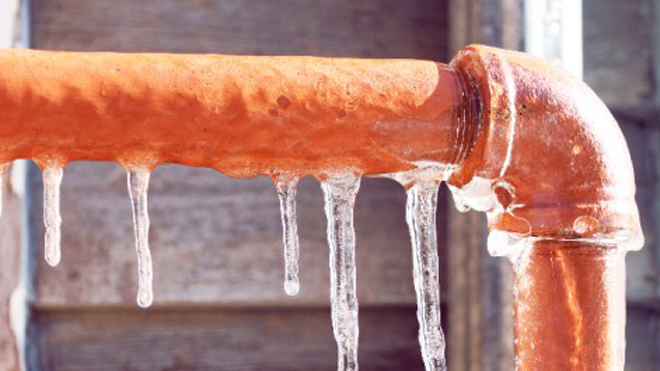Ways to Safeguard Your Plumbing from Cold Weather: Essential Strategies
Book An AppointmentAre you currently looking for help and advice concerning Prevent Frozen Pipes ?

Winter can ruin your pipes, specifically by freezing pipelines. Below's exactly how to avoid it from occurring and what to do if it does.
Introduction
As temperatures decline, the danger of frozen pipes rises, possibly resulting in costly fixings and water damage. Comprehending exactly how to prevent frozen pipelines is essential for home owners in cold climates.
Understanding Icy Pipelines
What triggers pipes to freeze?
Pipelines ice up when revealed to temperature levels below 32 ° F (0 ° C) for extended periods. As water inside the pipes ices up, it expands, taxing the pipe walls and potentially creating them to burst.
Risks and damages
Frozen pipes can lead to water interruptions, property damages, and costly repair services. Ruptured pipelines can flood homes and trigger considerable architectural damages.
Indicators of Frozen Water Lines
Identifying icy pipelines early can stop them from rupturing.
Exactly how to identify icy pipes
Search for decreased water flow from faucets, uncommon smells or sounds from pipelines, and noticeable frost on revealed pipelines.
Avoidance Tips
Protecting prone pipelines
Wrap pipes in insulation sleeves or use heat tape to protect them from freezing temperature levels. Concentrate on pipelines in unheated or outside areas of the home.
Home heating strategies
Maintain interior rooms sufficiently heated, specifically locations with plumbing. Open up cupboard doors to allow cozy air to distribute around pipelines under sinks.
Safeguarding Exterior Plumbing
Yard pipes and outdoor taps
Disconnect and drain yard hoses before wintertime. Set up frost-proof spigots or cover outdoor taps with insulated caps.
What to Do If Your Pipelines Freeze
Immediate activities to take
If you presume frozen pipes, maintain faucets open up to ease stress as the ice thaws. Use a hairdryer or towels taken in hot water to thaw pipes gradually.
Long-Term Solutions
Architectural adjustments
Consider rerouting pipelines far from exterior walls or unheated locations. Include additional insulation to attics, basements, and crawl spaces.
Updating insulation
Buy high-quality insulation for pipelines, attic rooms, and walls. Proper insulation aids preserve consistent temperature levels and lowers the threat of frozen pipelines.
Final thought
Avoiding icy pipes calls for positive steps and quick reactions. By recognizing the reasons, signs, and safety nets, house owners can safeguard their plumbing throughout cold weather.
5 Ways to Prevent Frozen Pipes
Drain Outdoor Faucets and Disconnect Hoses
First, close the shut-off valve that controls the flow of water in the pipe to your outdoor faucet. Then, head outside to disconnect and drain your hose and open the outdoor faucet to allow the water to completely drain out of the line. Turn off the faucet when done. Finally, head back to the shut-off valve and drain the remaining water inside the pipe into a bucket or container. Additionally, if you have a home irrigation system, you should consider hiring an expert to clear the system of water each year.
Insulate Pipes
One of the best and most cost-effective methods for preventing frozen water pipes is to wrap your pipes with insulation. This is especially important for areas in your home that aren’t exposed to heat, such as an attic. We suggest using foam sleeves, which can typically be found at your local hardware store.
Keep Heat Running at 65
Your pipes are located inside your walls, and the temperature there is much colder than the rest of the house. To prevent your pipes from freezing, The Insurance Information Institute suggests that you keep your home heated to at least 65 degrees, even when traveling. You may want to invest in smart devices that can keep an eye on the temperature in your home while you’re away.
Leave Water Dripping
Moving water — even a small trickle — can prevent ice from forming inside your pipes. When freezing temps are imminent, start a drip of water from all faucets that serve exposed pipes. Leaving a few faucets running will also help relieve pressure inside the pipes and help prevent a rupture if the water inside freezes.
Open Cupboard Doors
Warm your kitchen and bathroom pipes by opening cupboards and vanities. You should also leave your interior doors ajar to help warm air circulate evenly throughout your home.

We were made aware of that report about How to prepare your home plumbing for winter weather from a good friend on a different domain. You should take the time to share this write-up if you liked it. Thanks for your time. Kindly check up our website back soon.
Click For More Info